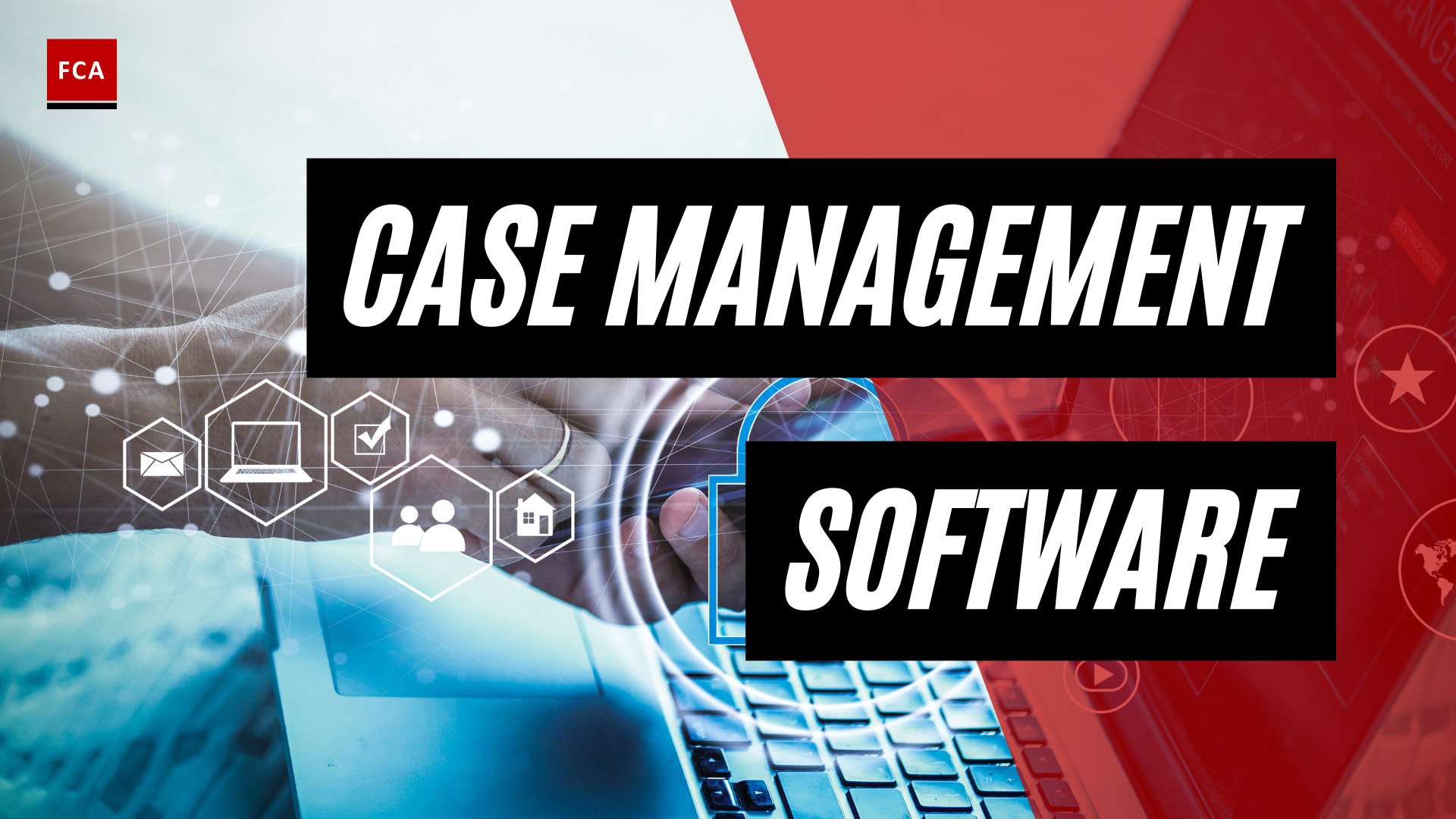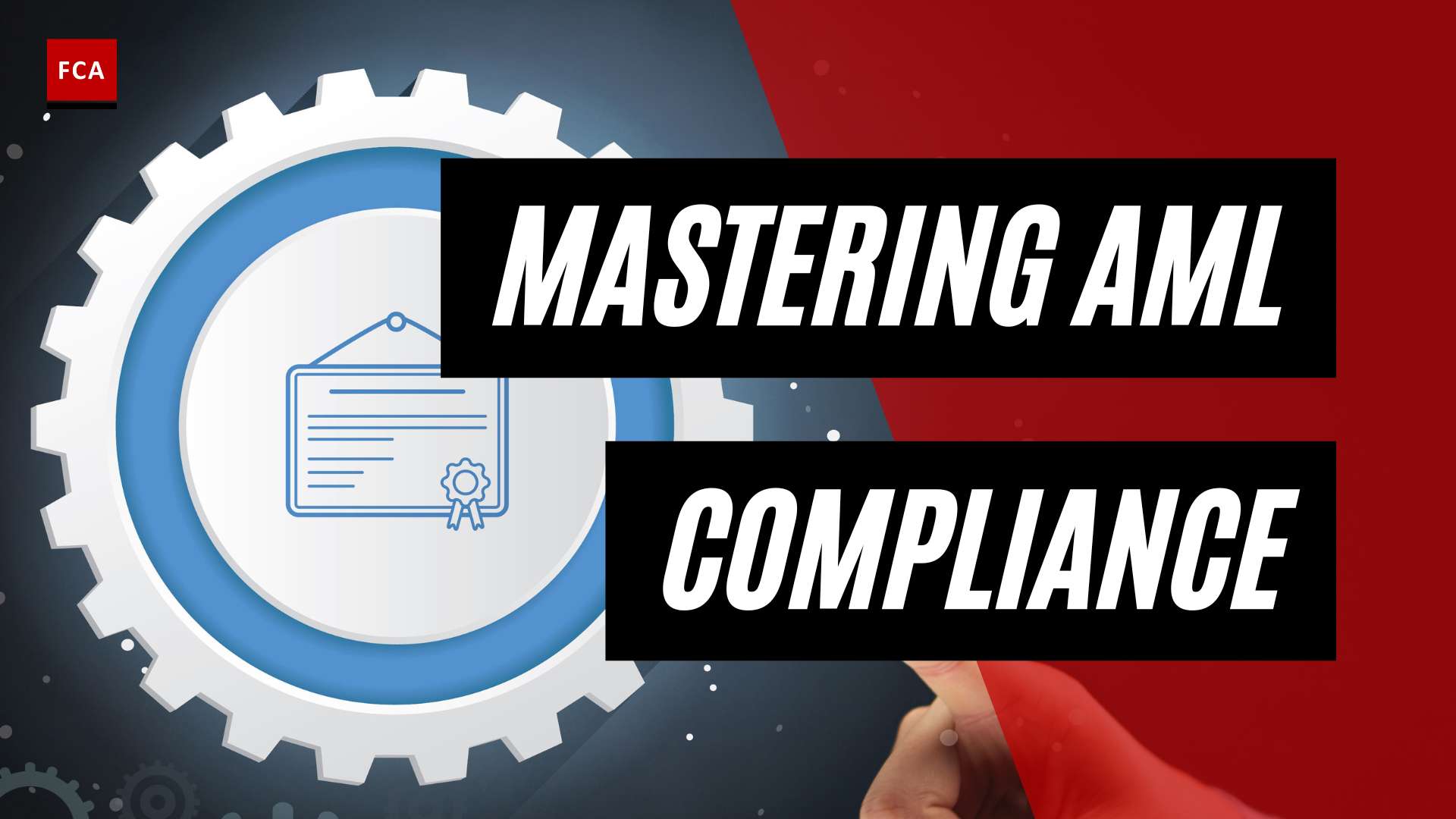AML Training Requirements: An Overview
To effectively combat money laundering and prevent illicit financial activities, it is crucial for businesses to prioritize anti-money laundering (AML) training. AML training plays a pivotal role in educating professionals about the regulations, procedures, and best practices necessary to detect and prevent money laundering. By understanding the importance of AML training and complying with regulatory mandates, organizations can bolster their defenses against financial crimes.
Importance of AML Training
Effective AML training is vital for several reasons. First and foremost, it helps in preventing financial crimes by equipping individuals with the knowledge and skills needed to identify and report suspicious activities. By ensuring that employees are well-trained in AML procedures, organizations can create a robust line of defense against money laundering, terrorist financing, and other illicit activities.
Furthermore, AML training is crucial for protecting institutions from regulatory scrutiny and legal consequences. Compliance with AML training requirements is not only a moral obligation but also a legal mandate. Failure to comply with these requirements can result in significant penalties, fines, and reputational damage. By implementing comprehensive AML training programs, organizations demonstrate their commitment to maintaining a culture of integrity and accountability.
Regulatory Mandates for AML Training
Various regulatory bodies across the globe have established mandates for AML training. These mandates aim to ensure that businesses in specific sectors are equipped with the necessary knowledge and skills to combat money laundering. The specific requirements may vary depending on the jurisdiction and the industry in question.
For instance, in the United Kingdom, the Money Laundering Regulations 2017 stipulate that businesses in sectors such as financial services, accountants, estate agents, and law firms undertaking regulated work must comply with AML regulations. These regulations mandate the implementation of robust AML training programs to educate employees about their responsibilities and obligations in detecting and preventing money laundering (VinciWorks).
Similarly, in the United States, financial institutions are required to provide annual AML training to employees in accordance with the Bank Secrecy Act (BSA) and the USA PATRIOT Act. These laws emphasize the importance of AML training in deterring money laundering and terrorist financing. Non-compliance with these training requirements can lead to severe penalties and fines (Financial Crime Academy).
To ensure compliance with regulatory requirements, organizations should develop comprehensive AML training programs that cover various aspects, including the identification and reporting of suspicious activities, understanding customer due diligence, and recognizing red flags. By adhering to these regulatory mandates, organizations can enhance their ability to prevent money laundering and protect the integrity of the financial system.
In the next sections, we will delve deeper into the key aspects of AML training, the consequences of non-compliance, the specific requirements for different sectors, and the components of effective AML training programs. Stay tuned to learn more about how organizations can meet the standards for AML training to safeguard their operations and contribute to the global fight against money laundering.
Key Aspects of AML Training
To effectively combat money laundering and uphold regulatory compliance standards, AML training programs should cover various key aspects. These aspects include the identification and reporting of suspicious activities, understanding customer due diligence, and recognizing red flags and risk factors. Let’s dive deeper into each of these key aspects:
Identification and Reporting of Suspicious Activities
AML training emphasizes the importance of recognizing and reporting suspicious activities that may be indicative of money laundering or terrorist financing. This includes understanding the red flags that may indicate illicit transactions, such as unusual transaction patterns, inconsistent customer behavior, or large cash deposits (Financial Crime Academy). By providing employees with the knowledge and tools to identify suspicious activities, organizations can help prevent illicit funds from entering the financial system and contribute to the overall fight against financial crime.
Understanding Customer Due Diligence
Customer due diligence (CDD) is a crucial component of AML training. It involves assessing and verifying the identity of customers, understanding the nature of their business relationships, and determining the level of risk associated with each customer. AML training equips employees with the knowledge and skills to perform effective CDD, such as conducting thorough customer background checks, verifying the source of funds, and monitoring ongoing customer activity. By implementing robust CDD practices, organizations can mitigate the risk of unwittingly facilitating money laundering activities (Financial Crime Academy).
Recognizing Red Flags and Risk Factors
Another key aspect of AML training is educating employees about the red flags and risk factors associated with money laundering and other financial crimes. This includes being aware of common techniques used by criminals, such as structuring transactions to avoid reporting requirements, using shell companies, or engaging in high-volume, high-speed transactions (Financial Crime Academy). By understanding these red flags and risk factors, employees can be vigilant in their day-to-day activities, identifying any suspicious behavior that may require further investigation.
It is important for organizations to provide regular and comprehensive AML training programs to their employees. Training should be tailored to specific roles within the organization, with content that aligns with the duties and responsibilities of each employee. For example, customer-facing staff may require different training compared to those in back-office roles. By ensuring that employees receive appropriate training, organizations can enhance their ability to detect and prevent money laundering activities, protect the integrity of the financial system, and comply with regulatory requirements.
To meet anti-money laundering training requirements, professionals in the financial sector can consider certifications such as the FCA AML Foundations course. This course covers essential topics such as the basics of money laundering, customer due diligence, and identifying suspicious activity. Completion of such certifications demonstrates a commitment to staying current with regulatory developments and meeting anti-money laundering training requirements.Consequences of Non-Compliance with AML Training Requirements
Ensuring compliance with anti-money laundering (AML) training requirements is of paramount importance for organizations, particularly in the financial industry, to combat money laundering, terrorist financing, and other illicit activities. Failure to comply with these requirements can result in severe consequences, including legal ramifications, financial penalties, reputational damage, and loss of business opportunities.
Legal Consequences and Fines
Non-compliance with AML training requirements can expose organizations to significant legal consequences and hefty fines. In the United States, financial institutions are required to provide annual training to employees as mandated by the Bank Secrecy Act (BSA) and the USA PATRIOT Act. Failure to comply with these training requirements can lead to penalties imposed by regulatory authorities. The exact fines and penalties vary depending on the jurisdiction and the severity of the non-compliance. For specific guidelines and regulations, it is recommended to refer to the appropriate regulatory bodies.
Reputational Damage and Loss of Business Opportunities
Non-compliance with AML training requirements can have far-reaching consequences for an organization’s reputation and business opportunities. A failure to implement effective AML training programs can result in negative publicity, eroding customer trust and confidence. The reputational damage may lead to a loss of existing clients and a decrease in new business opportunities. Additionally, non-compliance can also deter potential business partners, investors, and customers who prioritize working with organizations that demonstrate a commitment to combating money laundering and illicit activities.
Organizations that prioritize AML training demonstrate their dedication to maintaining a culture of integrity and accountability. By ensuring compliance with AML training requirements, organizations can protect their reputation, attract new clients, and foster trust and confidence among existing stakeholders.
To mitigate the consequences of non-compliance, organizations should invest in comprehensive AML training programs, adhere to best practices, and comply with international AML/CFT (Counter Financing of Terrorism) frameworks. Implementing effective AML training can help organizations avoid legal pitfalls, protect their reputation, and contribute to the overall integrity of the financial system.
For more information on AML training requirements for specific sectors, such as the financial services industry, accountants and law firms, and estate agents, refer to our article on AML training requirements for different sectors.
AML Training Requirements for Different Sectors
When it comes to anti-money laundering (AML) training, regulatory requirements vary across different sectors. It is crucial for businesses to understand and comply with these requirements to effectively combat money laundering, terrorist financing, and other illicit activities. Let’s explore the AML training requirements for the financial services industry, accountants and law firms, as well as estate agents and other relevant sectors.
Financial Services Industry
In the financial services industry, including banks, credit unions, investment firms, and insurance companies, AML training is of utmost importance. Financial institutions are subject to stringent AML regulations and are required to implement comprehensive training programs to ensure compliance. These regulations are enforced by regulatory bodies such as the Financial Industry Regulatory Authority (FINRA), the Securities and Exchange Commission (SEC), and the Financial Crimes Enforcement Network (FinCEN) (Financial Crime Academy).
AML training for the financial services industry should cover a range of topics, including identification and reporting of suspicious activities, understanding customer due diligence (CDD), recognizing red flags and risk factors, and the legal obligations and responsibilities of employees in preventing money laundering. It is essential for employees in this sector to stay updated with the latest AML regulations and best practices.
Accountants and Law Firms
Accountants and law firms that engage in regulated work are also subject to AML training requirements. These professionals play a vital role in combating money laundering by identifying and reporting suspicious transactions. They are required to have a thorough understanding of AML regulations and the specific red flags and risk factors that may be encountered in their respective fields.
AML training for accountants and law firms should focus on topics such as customer due diligence, record-keeping requirements, and reporting obligations. It is crucial for professionals in these sectors to be aware of the legal and ethical responsibilities associated with preventing money laundering and to implement effective internal controls and procedures to mitigate the risks.
Estate Agents and Other Relevant Sectors
Estate agents and professionals in other relevant sectors, such as high-value dealers, casinos, and trust and company service providers, are also subject to AML training requirements. These sectors are particularly vulnerable to money laundering due to the nature of their business activities and the potential for large financial transactions.
AML training for estate agents and other relevant sectors should cover topics such as customer due diligence, identification and verification of beneficial owners, and risk assessment. Professionals in these sectors should be trained to recognize the red flags associated with money laundering and to report any suspicious activities to the appropriate authorities.
Compliance with AML training requirements is essential for businesses in all sectors mentioned above to fulfill their legal obligations and contribute to the overall efforts in combating money laundering. By implementing comprehensive AML training programs and staying up-to-date with regulatory changes, businesses can create a culture of integrity and accountability, ensuring the effective prevention of money laundering within their organizations.
To learn more about AML training requirements and best practices, refer to our article on aml training program standards and explore the resources provided by regulatory bodies and industry experts.
Effective AML Training Programs
To combat money laundering effectively and ensure compliance with regulatory requirements, organizations must implement comprehensive AML training programs. These programs play a crucial role in preventing financial crimes, protecting institutions from regulatory scrutiny, and safeguarding the integrity of the financial system (Financial Crime Academy). Here are the key components and best practices for implementing effective AML training programs:
Components of Comprehensive AML Training
- Basics of AML: A comprehensive AML training program should start with an overview of the basics of money laundering, including its definition, stages, and techniques used by criminals. This foundation helps participants understand the importance of AML measures and their role in preventing illicit financial activities.
- Legal and Regulatory Framework: AML training should cover the relevant laws, regulations, and industry-specific guidance that govern anti-money laundering efforts. It should provide an understanding of the regulatory requirements for customer due diligence, suspicious activity reporting, record-keeping, and other compliance obligations.
- Identification and Reporting of Suspicious Activities: A critical aspect of AML training is educating employees on how to identify and report suspicious transactions or activities. This includes recognizing red flags, understanding typologies of money laundering, and knowing the proper reporting procedures to ensure compliance with reporting obligations.
- Customer Due Diligence: AML training should emphasize the importance of customer due diligence (CDD) in preventing money laundering and terrorist financing. It should provide guidance on conducting risk-based assessments, verifying customer identities, and monitoring customer transactions to detect unusual or suspicious behavior.
- Internal Controls and Procedures: AML training programs should familiarize participants with the internal controls and procedures implemented within their organization to prevent money laundering. This includes understanding the roles and responsibilities of different departments, the importance of information sharing, and the use of technology to enhance AML efforts.
Best Practices for AML Training Implementation
- Tailored Training: AML training programs should be tailored to the specific roles and responsibilities of employees. Different departments may have varying levels of exposure to money laundering risks, and training should address these unique needs.
- Engaging and Interactive Content: To promote effective learning, AML training should incorporate engaging and interactive content. This can include case studies, real-life examples, quizzes, and interactive discussions that encourage participants to apply their knowledge to practical scenarios.
- Regular Updates and Refreshers: AML regulations and typologies of money laundering evolve over time. To ensure ongoing effectiveness, AML training programs should be regularly updated to reflect the latest regulatory requirements and emerging trends. Periodic refresher courses can also reinforce knowledge and keep employees informed about new developments.
- Management Support and Accountability: Management should demonstrate a commitment to AML training by actively supporting and participating in the program. This creates a culture of compliance and accountability throughout the organization, emphasizing the importance of AML training to all employees.
Compliance with International AML/CFT Framework
In addition to meeting regulatory requirements, organizations should also consider compliance with international anti-money laundering and countering the financing of terrorism (AML/CFT) frameworks. AML training programs should cover international standards and best practices established by organizations such as the Financial Action Task Force (FATF) and regional regulatory bodies.
By ensuring compliance with international AML/CFT frameworks, organizations can strengthen their AML training programs, demonstrate commitment to global standards, and enhance their ability to prevent financial crimes effectively.
To further enhance their AML training programs, professionals can also pursue certification courses such as the FCA AML Foundations course. This course covers essential topics like money laundering basics, customer due diligence, and identification of suspicious activities. By completing such certification programs, professionals can demonstrate their commitment to anti-money laundering training and stay current with regulatory developments.
Implementing effective AML training programs with comprehensive content, engaging delivery, and compliance with international standards is crucial to meeting the regulatory requirements for AML training and mitigating the risk of money laundering in organizations across various industries.
Frequency and Tailoring of AML Training
To meet regulatory requirements and effectively combat money laundering, it is crucial for organizations to establish a robust anti-money laundering (AML) training program. In this section, we will explore the frequency of AML training, the importance of tailoring it to specific roles, and considerations for different industries.
Frequency of AML Training
The frequency of AML training is influenced by various factors, including local regulatory requirements, the size of the organization, the employee’s role, and the risk level associated with their responsibilities. In most countries, such as the UK, US, Europe, and Canada, AML training is typically required to be completed at least once a year (Great Chatwell Academy).
However, certain industries, particularly financial institutions, may have more frequent training requirements. These organizations often provide AML training on a quarterly or even monthly basis to ensure employees stay updated on the evolving risks and regulatory landscape.
It is important to note that while regulatory guidelines provide a minimum requirement for training frequency, organizations are encouraged to assess their unique risks and consider more frequent training if necessary. Regular and ongoing AML training plays a critical role in maintaining compliance, reducing the risk of financial crimes, and protecting against potential penalties and legal consequences (Great Chatwell Academy).
Tailoring AML Training to Specific Roles
AML training should be tailored to the specific roles within an organization. Different employees have varying levels of exposure to money laundering risks and different responsibilities when it comes to identifying and reporting suspicious activities. Tailoring the training content based on the duties and responsibilities of each role ensures that employees receive the necessary knowledge to fulfill their obligations effectively.
For example, customer-facing staff who interact directly with clients should receive training focused on recognizing red flags and conducting customer due diligence. On the other hand, employees in back-office roles may require training that emphasizes the identification and reporting of suspicious activities in transaction monitoring processes.
By customizing AML training to specific roles, organizations can provide targeted and relevant information to employees, enabling them to better understand their obligations and contribute to the overall effectiveness of the organization’s AML program.
Training Considerations for Different Industries
AML training requirements can vary across industries, as the risks and regulations differ depending on the sector. Financial institutions, such as banks and credit unions, are typically subject to more stringent AML training requirements due to the nature of their business and the higher risk they may face. In these industries, AML training is often more frequent, ranging from quarterly to monthly intervals (Great Chatwell Academy).
Other sectors, such as accountants and law firms, also have specific AML training obligations, although the frequency may differ. Estate agents and certain relevant sectors may have industry-specific AML training requirements as well.
It is essential for organizations in different industries to stay informed about the specific AML training regulations that apply to their sector. This ensures compliance with industry-specific guidelines and helps mitigate the risk of financial crimes that may be prevalent in their respective industries.
By tailoring AML training to specific roles and considering industry-specific requirements, organizations can enhance the effectiveness of their training programs, promote a culture of compliance, and minimize the risk of money laundering activities within their operations.









